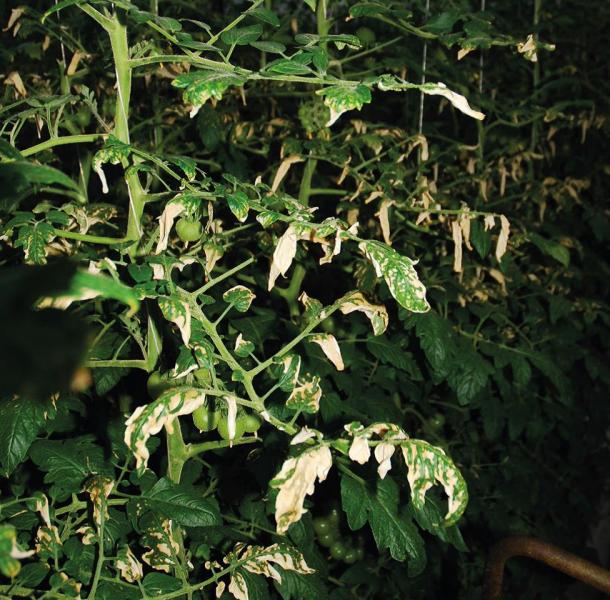Please click here to access the main AHDB website and other sectors.
- Home
- Knowledge library
- When to use CO2
When to use CO2
Experiments with tomato have shown that morning and afternoon CO2 enrichment give similar yield benefits.
Consequently, it is best to spread the use of the available CO2 over the whole course of the day, and so avoid canopy depletion. However, the optimal CO2 concentration will change over the course of the day. The benefits of CO2 enrichment increase at higher light levels, but the efficiency of enrichment decreases with higher ventilation rates. Simulations carried out as part of PC 110a suggest that CO2 levels should ideally be highest around noon in spring and autumn, but that in the summer they should be highest in the morning when ventilation rates tend to be lower.

Excess CO2 damage in tomato
Preliminary results from commercial unreplicated monitoring in PE 021 suggest that there was a reduced photosynthetic response in the afternoon of a large vine (cv. Roterno) and cocktail cherry (Piccolo) tomato. The data suggest there may be merit in tailoring CO2 enrichment to the morning and up to and including the brightest parts of the day. This will shift from up to 15:00 h in the early season and move back to 12-13:00 h in September/October. Piccolo was shown to be less efficient at scavenging available CO2 compared with Roterno and as such is potentially more sensitive to lower CO2 enrichment. It should be stressed that these are preliminary results and that a variety of environmental variables will have an influence on these responses.


